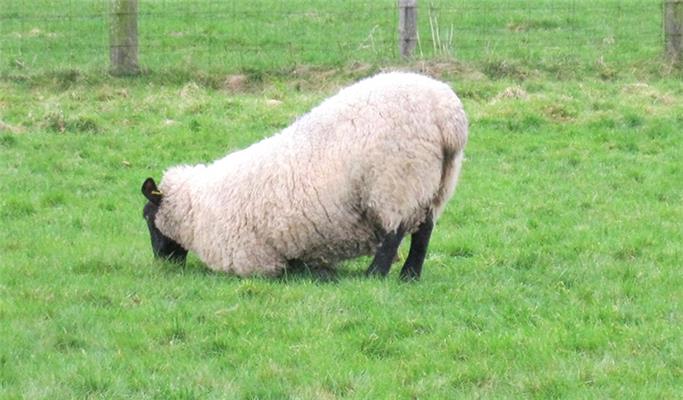Only around 20% of farmers are able to spot and treat lameness in sheep early.
January 16, 2018

A new wearable smart device that can automatically detect lameness in sheep is being developed by veterinary researchers at the University of Nottingham in the U.K. and industry partners Intel and Farm Wizard.
Lameness is the biggest health and welfare problem on sheep farms. More than 90% of sheep farmers in the U.K. report lameness in their flocks, most of which is caused by the bacterial infection footrot, the university said. Cases can be treated if spotted early enough in individual sheep, which, in turn, can prevent the problem from spreading in the flock.
Because sheep are a "prey" species, they are likely to mask signs of lameness when they feel threatened or are being observed by farmers and vets. This has made diagnosis difficult and has meant relying on visual inspection, because no validated commercial tools were available.
The new technical feasibility study and prototype tagging and monitoring system has been developed by Nottingham Vet School researcher associate professor Jasmeet Kaler, with Intel and agricultural software developer Farm Wizard.
“Our new system is a smart device — a wearable technology that we hope will be a game-changing investment for sheep farmers and a first for the industry. It consists of a sensing device worn on a sheep’s ear tag that gathers accelerometer and gyroscope data, effectively tracking the animal’s behavior and movement as well as its gait," Kaler said. "The algorithms we have developed are used to create different alerts for farmers. So far, they have provided high accuracy in predicting various behaviors of the sheep, including differentiating lameness. We are very excited as our first paper from this work has been accepted in the journal of Royal Society Open Science and will be be available soon.
"I think what is very novel about this technology is that it utilizes edge processing, which means it doesn't necessarily need to send all the data to the cloud, because it does the thinking on the device. This is an advantage when it comes to battery life. We are currently validating the results in a larger trial, and we hope the technology will be available after some further work,” Kaler added.
Kaler’s previous research has found that, to date, only around 20% of farmers are able to spot and treat lameness in sheep early. In addition, the prevalence of lameness caused by footrot was found to be much lower in groups of sheep where individual sheep had been treated early with parenteral and topical antibiotics.
The sheep lameness smart sensor project has been funded by Innovate UK and the U.K.'s Biotechnology & Biological Sciences Research Council and was recently presented at the Oxford Farming Conference’s Innovation Hub.
You May Also Like


.png?width=300&auto=webp&quality=80&disable=upscale)
